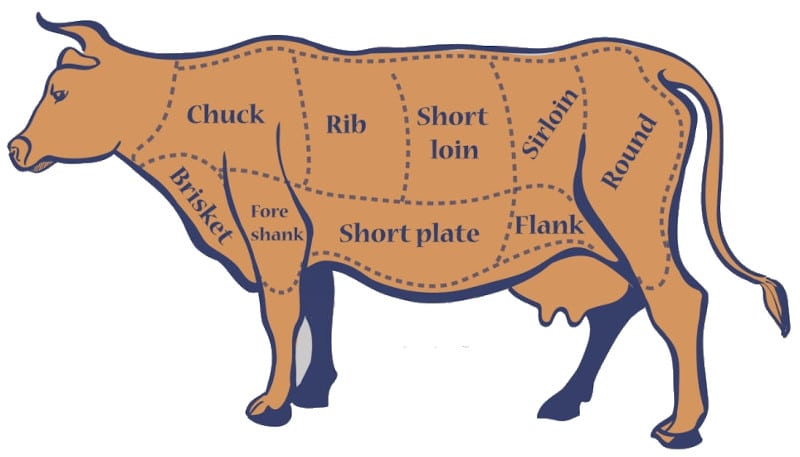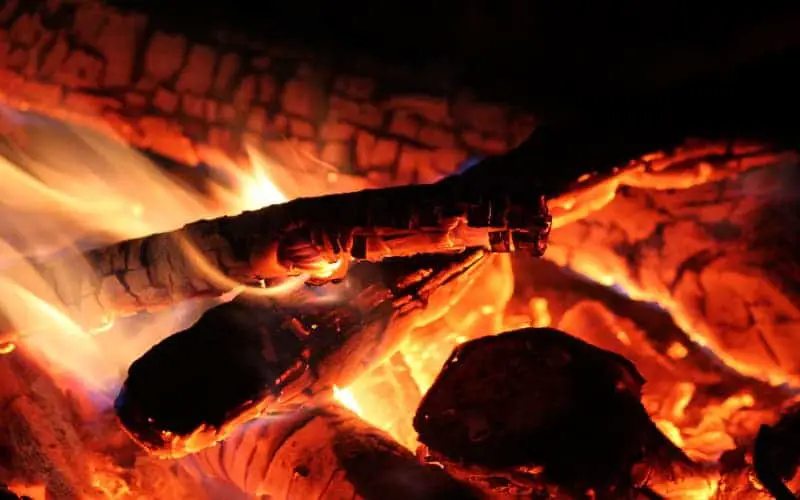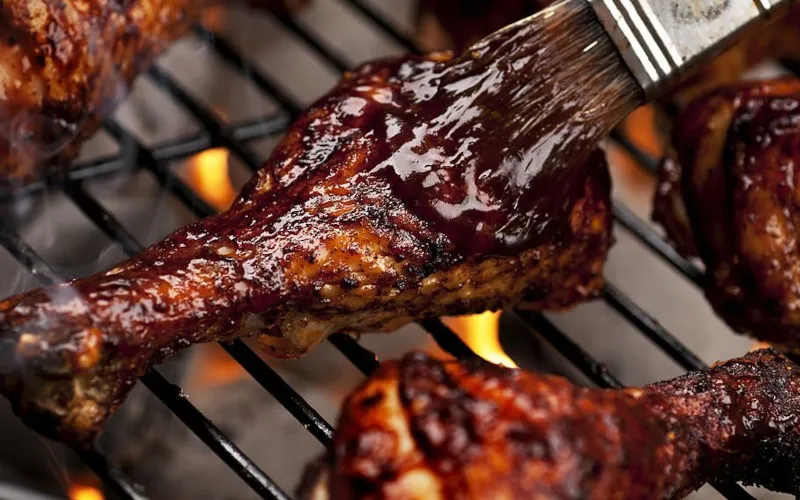Meat lovers, rejoice! The best of both worlds is here; the shoulder roast and the chuck roast. Both are delicious but have their differences. A chuck roast can be cooked slowly or on the stovetop. It’s perfect for those who want to cook all day long. On the other hand, a shoulder roast will take longer to cook and requires cooking over an open flame.
Either way, you get great results.
The shoulder roast comes from the same cut as a chuck roast, but it’s been trimmed and rolled to create a more uniform shape that will cook faster than its chunkier cousin. It also has a higher fat content, so you get all the flavor without worrying about dryness. You’ll be able to enjoy this tasty roast with mashed potatoes or gravy for a complete meal.
While both roasts are very good, there’s a noticeable difference between them. We have some information to help you differentiate between the two cuts to ensure you get what you want.
What is a Shoulder Roast?
A shoulder roast is cut from the upper portion of the leg. Looking at the picture of a cow below, you’ll see where the shoulder roast would be located.

This cut is usually around 3-4 pounds and contains much connective tissue called muscle fibers. These muscle fibers hold together the leg muscles and keep them strong. They also contain collagen, which makes them tender when cooked.
As mentioned, the shoulder roast contains a lot of muscle, making it ideal for braising, stewing, and even barbecuing. When preparing your roast, you’ll notice that it has no visible fat. That means that it won’t become greasy while cooking.
It may taste better depending on personal taste and preference because it’s not marbled like most beef. Some people would even coo it straight from the fridge.
There are two main shoulder roast cuts: the flat iron cut and the petite cut.
The flat iron cut is considered the leanest option. It’s also known as the “Boston butt” cut. While it’s often used for stews and braises, it can also be roasted whole. The petite cut is slightly fattier and therefore works well for roasting.
For both cuts, maintaining a low cooking temperature is important. If you don’t, you could end up with dry meat. On a similar note, overcooking also leads to dry meat. We recommend using a thermometer to monitor the internal temperature to avoid this.
Because the shoulder roast is quite tender, it doesn’t necessarily have to be marinade before being cooked. However, if you choose to marinate, we recommend doing so overnight. This allows the flavors to penetrate throughout the entire roast.
[humix url=”https://electricsmokerhq.com/humix/video/sc_qZRHJjXf” float=”1″ autoplay=”1″ loop=”1″]
What is a Chuck Roast?
A chuck roast is cut from the upper half of the leg. It’s also referred to as a Boston butt roast. This cut is generally much thicker than the shoulder roast. Because of this thickness, it takes longer to cook. Again, the muscles around the chuck roast are often worked, so they get to be a bit tougher. The chunk roast also has less connective tissue and isn’t as tender.
The slight toughness of this part of meat calls for slow-long cooking methods. For example, you’d probably want to use a pressure cooker or slow cooker to prepare this roast.
Getting it in the heat for a significant time ensures you break the toughness. Moreover, you might want to marinade it before putting it in the oven. This will make it tender and allow the flavors to permeate the roast.
Chuck roasts are best suited for comfort dishes such as pot roasts and stews. They tend to work well in sandwiches and burgers too. Although they can be grilled or broiled, we’d suggest against it. Instead, try grilling or baking.
You can cut a chuck roast into steaks or cubes. We prefer cubed chuck roasts since they’re easier to eat. We’ve even seen some chefs serve them in bite-sized portions.
Related: Best Cuts Of Beef To Smoke
Difference Between Shoulder Roast and Chuck Roast
There are subtle differences between these two types of roasts in terms of texture, flavor, use, size, cooking time, and cost. The following table summarizes these differences:
| Shoulder Roast | Chuck Roast | |
|---|---|---|
| Texture | Less marbling | More marbling |
| Flavor | More flavor | Less flavor |
| Use | Low and slow meals | Hot and fast meals |
| Size | Thick and large | Leaner and smaller |
| Cooking Time | Faster to cook | Longer to cook |
| Cost | Slightly more expensive | Cheaper |
Texture
The key difference between these two types of beef roasts is their texture. A shoulder roast tends to be less marbling but more tender. As a result, it’s usually softer than a chuck roast. You can easily tell by looking at the surface. Again, a look at the two pieces. You’ll see less visible connective tissue at the shoulder roast.
Flavor
In terms of flavor, the chunk roast tends to be sweeter than a shoulder roast. Although their cooking process is quite lengthy, chunk roasts tend to be juicier than shoulder roasts. Remember that you can always marinate your roast before cooking.
On the other hand, shoulder roasts taste less flavorful and do not necessarily call for marination.
Use
Both types of roasts can be used interchangeably. However, most people would agree that the chuck roast is better cooked low and slow. This means that it can be braised, roasted, or stewed. On the other hand, the shoulder roast is better cooked hot and quickly. Chunk roasts are suitable for stews, pot roasts, and casseroles. Shoulder roasts are good candidates for making sandwiches and burgers.
Size
The chuck roast is larger than the shoulder roast. Therefore, it requires more space when preparing. If you don’t have enough room, you should consider buying a smaller piece of either.
Cooking Time
The chuck roast takes longer to cook than the shoulder roast. Because of its thickness and relative toughness, it needs more time to reach an internal temperature of 160°F. Shoulder roast would ideally take about half or less time.
It’s also worth noting that chuck roasts are much tougher than shoulder roasts, requiring more care during preparation.
Cost
Chuck roasts are generally cheaper than shoulder roasts. Some people call them “the poor man’s steak.”
How Is Shoulder Roast Cooked?
The shoulder roast should be cooked over low-medium heat. Using a gas stove, you may want to set your burner low. If you’re using an electric stove, you may want your burner to be on medium. When cooking, keep an eye on the thermometer inserted into the thickest part of the roast.
You want to ensure it reaches an internal temperature of 160 degrees Fahrenheit before removing it from the oven.
Some tips to keep in mind when cooking shoulder roast include:
- Make sure you have all the necessary equipment ready before starting to cook. That includes a large pot, a sharp knife, a cutting board, and a spoon.
- Always season your roast before putting it in the pan. Seasoning helps prevent the meat from drying out during cooking.
- Use a thermometer to measure the internal temperature of the roast.
- Remove the roast from the pan once it reaches an internal temperature between 140 – 150 degrees Fahrenheit.
- Allow the roast to rest for 10 minutes before slicing and serving.
- Serve the roast immediately after cooking.
- Store leftover roast in the refrigerator for up to 4 days.
- Freeze leftovers for future meals.
Cooking recipes for shoulder roast may involve other ingredients such as garlic, herbs, onions, spices, or sauces. Check out a complete video of how to cook a beef shoulder roast here:
Beef Shoulder Roast Recipe
Ingredients
- 1 beef shoulder roast (3-4 lbs)
- 2 teaspoons paprika
- 1 teaspoon garlic powder
- 1 teaspoon onion powder
- 1 teaspoon black pepper
- 1/2 teaspoon cumin
- 1/4 cup olive oil
- 1 cup chicken stock or beef broth
- 1/2 cup red wine vinegar
- 3 cloves garlic, minced
- 2 tablespoons chopped fresh parsley leaves
- 1 tablespoon chopped fresh thyme leaves
- 1 tablespoon honey
- Kosher salt and freshly ground black pepper to taste
Instructions
- Preheat oven to 350°F (175°C).
- Rub the beef shoulder roast with olive oil and season it with paprika, garlic powder, onion powder, black pepper, and cumin.
- Place the roast in a roasting pan or Dutch oven and add chicken stock or beef broth, red wine vinegar, garlic, parsley, thyme, and honey.
- Cover the pan or oven with a lid and roast in a preheated oven for 2 1/2 to 3 hours or until the roast’s internal temperature reaches 145°F (63°C).
- Remove the pan from the oven and let the roast rest for 10 minutes before slicing.
- Serve with your favorite sides, and enjoy!
Frequently Asked Questions
What is Shoulder Roast Good For?
A shoulder roast is a good cut of meat for slow-cooking methods such as braising or stewing. The tough connective tissue in the roast breaks down and becomes tender when cooked slowly, infusing the meat with flavor. The shoulder roast can also be diced and used in soups or stews or cut into steaks for grilling.
Shoulder roasts are typically less expensive than other cuts of beef, making them a good choice for budget-minded cooks. When selecting a shoulder roast, look for a dark red with marbled fat. Avoid roast trimmed too lean, resulting in dry, tough meat.
For best results, cook the shoulder roast to an internal temperature of 145 degrees Fahrenheit.
What Can I Use Instead of Chuck Roast?
The most common alternative to chuck roast is flank steak. Flank steak has a similar appearance and consistency to a chuck roast. It’s also relatively inexpensive. Another option is the rump roast. Rump roasts have a lot of fat but are slightly more tender than chunk roasts. They’re great for making stir-fries.
Conversely, chuck roasts must not be used alternatively with top-round roasts. Top round roasts are very lean and have a tough texture.
What Can You Cook With Beef Shoulder Roast?
Beef shoulder roasts can be used in many ways. You can use them in soups, stews, chili, and salads. They’re great for adding flavor to any dish. They tend to be very juicy when braised, the reason why they work well in stews. You can make the roasts even juicier by adding a bit of liquid, such as water, stock, wine, etc.
As with cooking time, a beef shoulder roast will typically take between 1½ hours to 2 hours, depending on your desired level of doneness. The higher the heat, the faster the roast will cook.
Can Shoulder Roast Replace Chuck Roast?
No. A chuck roast is too fatter and thicker than a shoulder roast. Also, a chuck roast is usually less tender than a shoulder roast. Although both roasts come from the same section (the cut from the neck end of the cow, whereas a shoulder roast comes from the bottom section of the animal), it doesn’t make sense to substitute one for the other.
Does Shoulder Roast Get More Tender If You Cook It For Longer?
Yes, but there’s a limit! Depending on the size of the roast, it will get tougher after about 3 hours. So, monitoring the temperature and knowing when to stop cooking is important. When you think the roast is done, check the temperature again.
If it still seems undercooked, continue cooking until it reaches the desired temperature. This way, you’ll avoid overcooking the meat.
Is Shoulder Roast A Good Cut of Meat?
Absolutely! Beef shoulder roasts are often considered the best cuts of meat because they contain a good amount of intramuscular fat, giving them rich flavor. Plus, they’re easy to prepare and cook. What’s more? Shoulder roasts are fairly economical when compared to other types of roasts.
Although not as cheap as chuck roasts, you can grab a sizeable shoulder roast for around $10-$15. Besides, depending on where you buy it, shoulder roasts are also much easier to find than chuck roasts.
Is Chuck Roast A Good Cut of Meat?
Chuck roasts are generally fatter than others, making them ideal for people who like their food with more fat. They’re also very versatile. You can use them to make sandwiches, burgers, tacos, stir-fries, and other dishes. Another great thing about chuck roasts is that they’re relatively inexpensive. You can easily find a decent-sized chuck roast for around $10-$15.
It’s also worth noting that chuck roasts are mostly sold whole. So, if you don’t need any extra parts, you can buy one without worrying about additional pieces.
Conclusion
The shoulder roast and chuck roast are both delicious but differ:
- A chuck roast can be cooked in a slow cooker or on the stovetop, while a shoulder roast will take longer to cook and requires cooking over an open flame.
- Shoulder roasts come from the upper portion of the leg and are usually around 3-4 pounds. They contain much connective tissue called muscle fibers, making them tender when cooked.
- Chuck roasts come from the leg’s upper half and are generally thicker than shoulder roasts. They also contain less connective tissue and aren’t as tender, requiring slow-cooking methods like pressure cooking or stewing.
I’d recommend going with a shoulder roast if you want something leaner. The reason is that shoulder roasts tend to be less fatty than chuck roasts.
However, if you prefer a bit more fat in your meal, then go ahead and choose a chuck roast instead. These two roasts are perfect for a family dinner or a quick weeknight meal.






